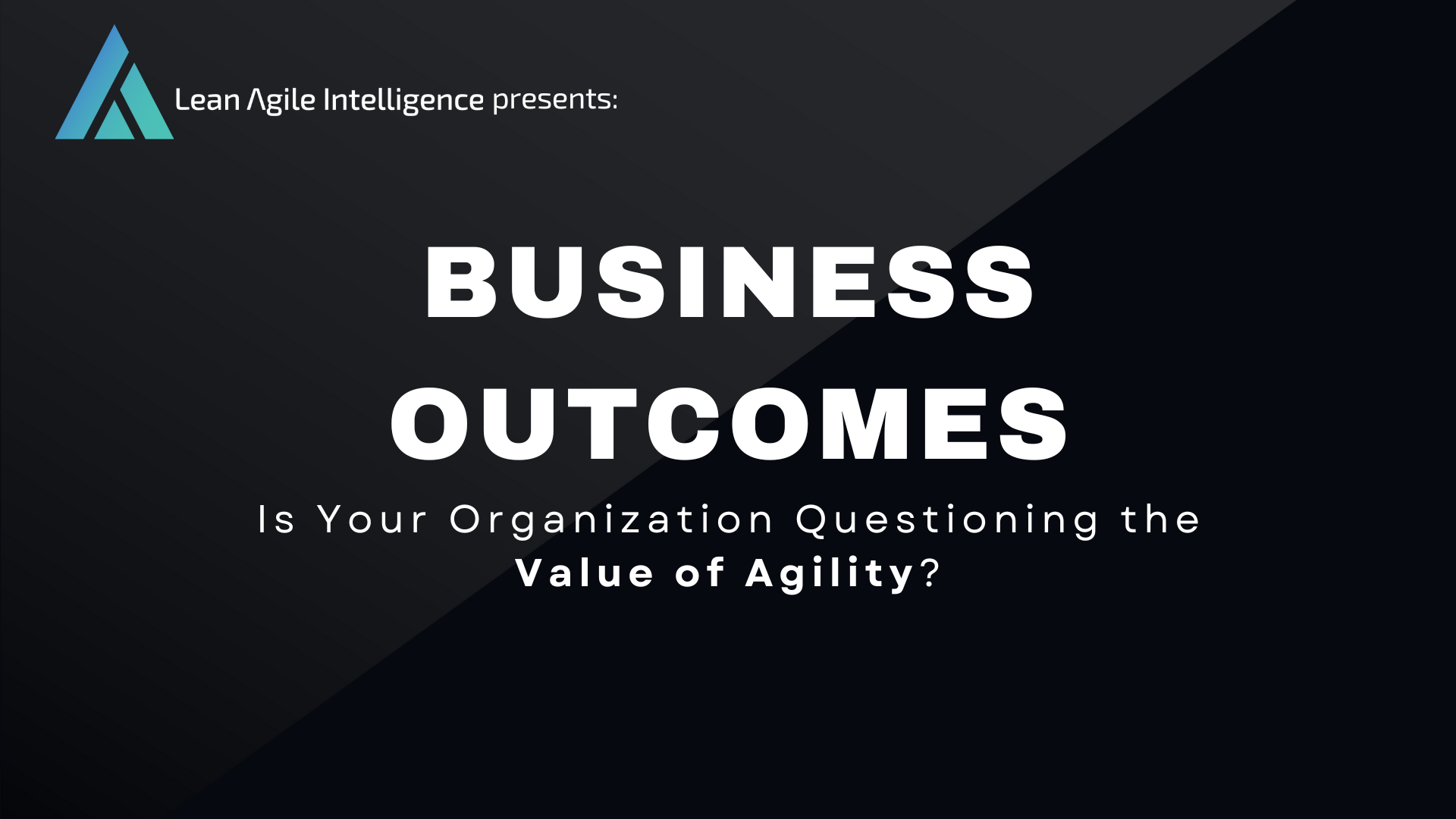Bridging the Gap: Turning Agile Metrics Into Business Outcomes
By Team Lean Agile Intelligence

In today’s results-driven environment, it’s no longer enough for organizations to simply adopt Agile frameworks. Leaders are demanding clear evidence of how Agile efforts translate into real business outcomes. Yet, too often, there’s a disconnect between the agile metrics teams track and the actual business value those metrics are supposed to represent.
The Metrics Trap
Most organizations are flush with agile metrics:
-
Story points completed
-
Velocity trends
-
Cycle and lead times
-
Defect rates
-
Number of deployments
These are useful indicators, but by themselves, they rarely answer the question that matters most to business leaders:
“How are these agile metrics actually driving our business outcomes?”
The Power of Qualitative Metrics for Business Outcomes
Qualitative metrics—are just as important. They capture things like:
-
Team morale and engagement
-
Customer feedback and satisfaction
-
Cross-team collaboration
-
Learning and adaptability
-
Psychological safety
When these qualitative measures are gathered alongside quantitative agile metrics, you begin to build a comprehensive narrative around business outcomes.

Connecting Agile Metrics to Business Outcomes
Bridging the gap means making clear, traceable connections between Agile practices and business outcomes. Here’s how leaders and coaches can do it:
- Start With Desired Business Outcomes
- Identify the key business outcomes that matter most to your organization, such as faster time to market, improved customer retention, or reduced operational costs.
- Map Agile Capabilities and Metrics to Outcomes
- Determine which agile metrics best align with your business outcomes:
- Want faster time to market? Track lead time and deployment frequency.
- Focused on customer retention? Monitor customer feedback cycles and how quickly you act on insights.
- Determine which agile metrics best align with your business outcomes:
- Collect and Combine Metrics
- Use quantitative agile metrics from tools like Jira or Rally to measure process improvements.
- Gather qualitative agile metrics from team surveys, retrospectives, and customer interviews to uncover deeper insights.
- Tell a Comprehensive Story for Business Outcomes
- Show not only what changed (metrics) but also how and why it changed (stories, feedback, context).
- Example: “After we adopted regular customer demos, our cycle time dropped by 18% (quantitative), and customer satisfaction scores increased as clients felt more involved in the process (qualitative).”
- Visualize and Share
- Leverage dashboards and platforms like Lean Agile Intelligence to clearly visualize both quantitative and qualitative agile metrics, demonstrating progress toward business outcomes in a way that resonates with stakeholders.
Action Steps for Leaders and Coaches
-
Regularly collect both quantitative and qualitative data
-
Link Agile capabilities and metrics directly to outcomes that matter to your business
-
Share the narrative with stakeholders—data + stories = buy-in
-
Choose tools that make it easy to track, visualize, and share your success
Ready to turn your agile metrics into business outcomes?
📅 Watch the recording of our webinar, to learn the process, and see how Lean Agile Intelligence can help you make the compelling case for Agility that your leaders want to hear.
We’ll dive into how to:
- ✅ Correlate Agile practices with business outcomes
- ✅ Blend qualitative and quantitative metrics to tell a clear story
- ✅ Discover tools that support the narrative using data from Jira, Rally & more
Whether you’re a leader, internal change agent, or consultant—this session will help you connect Agile investments to real results.
🎯 Stop struggling to justify Agile. Start steering your transformation with evidence that matters.
👉 Watch now!
